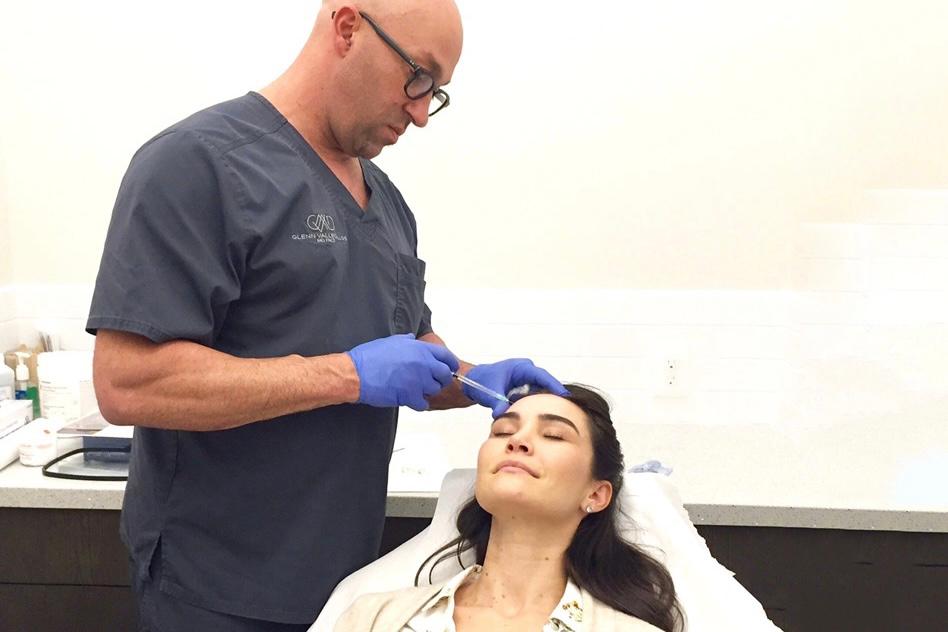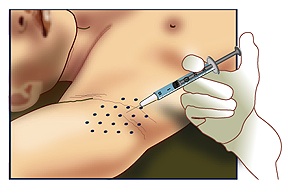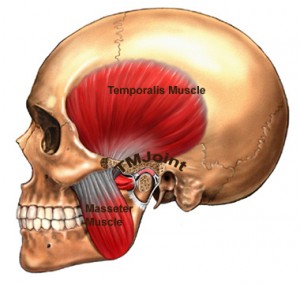
Botulinum Toxin Type A (onabotulinum toxin A), also known as Botox Cosmetic, is produced by Allergan and is an injectable neurmodulator, or “chemodenervation agent” made of purified protein derived from the bacterium Clostridium Botulinum. Botox Cosmetic acts to temporarily reduce the appearance of moderate to severe facial wrinkles by weakening the underlying muscles that cause the formation of wrinkles.
Procedure Walk-Through
- Preparation: Ideally, to minimize the risk of bruising, you should avoid aspirin and anti-inflammatory medications such as Motrin or Advil for two weeks prior to your appointment. Alcohol should also be avoided for one week preceding the procedure.
- Anesthesia: Patients may be given a local anesthetic or topical numbing cream to minimize discomfort during the procedure.
- Botox Cosmetic injections will be administered using a very fine needle to the areas of the face that require treatment, usually for moderate to severe frown lines between the eyebrows and other facial wrinkles. Botox Cosmetic works by inhibiting nerve impulses to facial muscles, thus lessening the activity that causes wrinkles to form. Botox Cosmetic injections for the treatment of other conditions are similar in nature to those for the management of wrinkles.
Botox Treatments

Hyperhidrosis Treatment
Botox Cosmetic can also be used to reshape the face in people with prominent masseter muscles and can be used to reduce the size of hypertrophic or large calf muscles. Other clinical applications of Botox Cosmetic include the treatment of plantar fasciitis symptoms. In specific situations, Dr. Vallecillos also uses Botox Cosmetic as an ancillary procedure to minimize scars during scar revision procedures. Botox Cosmetic is a non-surgical treatment, but should only be administered by qualified medical personnel, notably a board certified plastic surgeon.

Treatment of TMJ and Migraines
Botox Cosmetic can also be used to reshape the face in people with prominent masseter muscles and can be used to reduce the size of hypertrophic or large calf muscles. Other clinical applications of Botox Cosmetic include the treatment of plantar fasciitis symptoms. In specific situations, Dr. Vallecillos also uses Botox Cosmetic as an ancillary procedure to minimize scars during scar revision procedures. Botox Cosmetic is a non-surgical treatment, but should only be administered by qualified medical personnel, notably a board-certified plastic surgeon.
Who is a candidate for Botox Cosmetic?
Botox Cosmetic is an excellent treatment if you suffer from moderate to severe frown lines or other facial wrinkles. While a wide range of people can successfully receive this treatment, Botox Cosmetic is usually recommended for healthy men and women of at least 25 years of age.
What is the recovery time for Botox?
Dr. Vallecillos recommends that patients refrain from exercise for a period of 24 hours and lying down for no less than 4 hours following treatment with Botox Cosmetic.
Are there risks or side effects with Botox?
The most common side effect of Botox is bruising, usually slight and temporary. Applying ice to the affected areas both before and after the procedure can minimize the risk of bruising. Though rare, other possible side effects can include headache, which typically presents as a dull frontal headache and subsides within one week. The temporary development of a heavy brow and blepharoptosis (dropping of the upper eyelid) is also a well described, albeit rare risk of Botox Cosmetic.
Are there contraindications for Botox Cosmetic treatment?
There are several relative and absolute contraindications for Botox Cosmetic treatment. Absolute contraindications include pregnant women or women who are currently breast feeding, and patients who are experiencing skin or soft-tissue infections in the regions requiring Botox Cosmetic treatment. Relative contraindications include patients with defined neuromuscular disorders including, but not limited to as Myasthenia Gravis, Eaton-Lambert Syndrome, and Amyotrophic lateral sclerosis or ALS.
How long do the results last?
Most patients will notice results within two to fourteen days, with the effects of a treatment usually lasting between 3-6 months. Patients with high metabolisms such as athletes may experience a reduced duration of effect. Dr. Vallecillos will suggest a time frame for follow up treatments.
